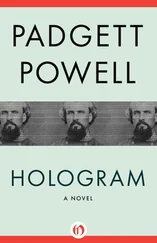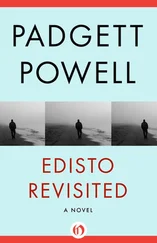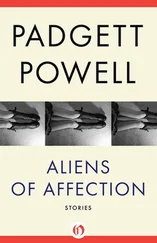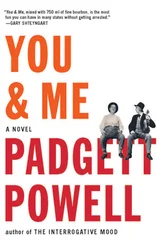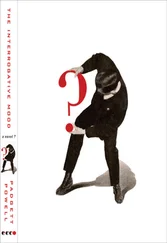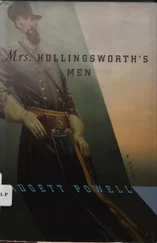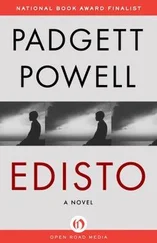Wagon boss: The Indians have not manifested themselves on the ridge lines of the surrounding hills in such prodigious number that we lose momentarily our breath and wonder if we are not in some kind of eclipse before finding ourselves indeed in some kind of eclipse, that of our very lives in one of those maddening tomahawk storms, those hurricanes of stone and hoof and yelling paint and buckskin and blood and everyone, including ourselves, hitting us with one thing or another while we generally find it more and more difficult to breathe, more and more difficult to see, more and more difficult to stand up, more and more difficult, alas, to keep on keepin’ on. The Indians have not shown us this unhappy formation and preparedness for, really, quite some time now. I wonder if it is not that collection of tiaras somehow protecting us. My order to dispose of them may be imprudent.
I have never thought about the tiara much. I have thought much about the Indian. One of the most recurring thoughts I have in that venue is of the last hurricane they put us through, which so many of us, constituting so few of the original number of us, somehow survived. I was personally on my knees, having given up; I was dementedly lining up fallen tomahawks on the ground in front of me, in an interesting head-to-tail bric-a-brac pattern, when I noticed an Indian pony go closely by me and wink at me. This happened then several more times, perhaps five or six, interrupting me at the business of arranging the tomahawks attractively on the ground. The pony kept winking, as if telling me that it would be all right, that this was not the disaster that it was his job to help make it all look like, that I was not to worry overmuch. So I did not, and eventually quit my brocade of tomahawks and fondly watched the revolutions of the winking pony exclusively. And here I am today, and I think now that I too would like to have a tiara. I don’t think I need two. No, I don’t, I don’t want two. I just want the one.
All of these pelts are good to go. Had we any idea where the fur traders are we would be sitting prettier. We will be eating beaver-tail sandwiches by the estimate of the quarterback, the quartermaster, for six weeks, no exceptions.
Nearly every time we slake our thirst of the effects of the blistering sun by guzzling water from the clear cool mountain streams, face down like dogs, we discover about a hundred feet upstream something big and putrid and dead, or I should say big and dead and putrid to more accurately reflect the sequence of perception. What you first see, actually, is something big enough that you notice it at all, and then when it does not retreat at your approach you surmise it is dead , and by then you are sufficiently upon it to revel in its inevitable putrid ness. So we discover, every time we drink of lifesaving cool water, something big and dead and putrid in it. And we move on , to the music of steel and leather and oncoming gastrointestinal complaint.
I was once struck by an arrow so sharp and so deftly put in me that, after the initial sting, which I ineffectively swatted at and decided had been a large carnivorous insect of so fearful a description that I was lucky not to have seen it, I went about my day, not discovering the arrow until I reclined upon it that evening. Perhaps as many as twenty-five of my pioneer brethren and sistern may have, must have, seen this wicked protuberance from my back and said nothing, operating, I suppose, under the general directive we obey out here not to dwell on the negative.
One of the supreme difficulties of living on an advancing frontier such as ours is that we may not have dogs and cats. We try, but they, like, we guess, get lost, or decide that the nomad life is not for them and just wordlessly slip off to make more permanent homesteads along the way. We have many (unconfirmed) reports that the Indians do have dogs and cats. If so, this will be an area for investigation in the matter of final reparations and restitution in the grievance settlements.
Here is what we wear on our shirt sleeves: mud, blood, snot, not feelings. Our feelings we wear somewhere inside our vests, close to our chests, like grubs in moist wood. This is best.
I make a good firm precise cut with the razor blade into the cork, from one side of the cork to the longitudinal axis. The cork is a segment of a cone, the diameter of one end approximately twice that of the other end, both ends flat. I am too stupid to know the name of this geometric figure and too stupid to know offhand, or even with industry, where to find out the name. “With industry” is some kind of vagueness by which I might mean crossing the room and getting the dictionary and then not knowing what to look up — cone? cork? I might mean a call to the reference desk at the library and then having to stammer, “Do you know how old-fashioned fishing corks were shaped, actually also the corks that were put into bottles as stoppers which were larger at one end than the other so that they stopped before going into the bottle?” And if I could get an affirmative, I would then say, “Well, what is the figure of this cork called? I need to know.”
At this point the librarian would not say, “Why do you need to know?” as he, or indeed she, might want to but would be prevented from by a consideration of professionalism.
So I would not be able to say, “Oh, you know, so if I were to try to write about cutting one of these corks for the purpose of inserting into it some fishing line, I would not have to waste a lot of words in an awkward and tedious and probably unserving description of the kind of cork I am talking about, I could just name it with the obscure geometer’s term that no one would know the meaning of and be done with it, and given that no one understood what kind of cork I was talking about anyway, in the absence of the long imprecise description at least he could get on with it. And there is a certain kind of person who might be bothered by not knowing the term for the cork and he might himself, if he was this kind of person, and if he was sufficiently bothered by it, go to the dictionary, but there is the other sort of person who would be unbothered by not knowing the term and just breeze on, gratified, perhaps even unconsciously, but gratified nonetheless, that he did not have to wade through the vague and tedious description of the cork which leaves him no better informed of it than the proper name which eludes him but which, the fumbling description, requires of him considerable time in the reading thereof.”
The librarian I am not going to call might, yes, be a woman, and may I say here that perhaps the most beautiful woman I have ever seen is a reference librarian? A woman so beautiful that men decline the opportunity to speak to her at all, and indeed one whom I am not at complete liberty to speak to in all the ways I might wish to speak to her, by which I mean only of course all the ways, or some of the ways, chiefly the intimate ways, that a man might be expected to want to speak to a woman he regards as the most beautiful he has ever seen.
Into the cork I press the monofilament fishing line, by holding a length of it tightly as one holds dental floss and pressing it into the razored slit that describes a plane to the longitudinal center of the cork, there we’ve been through that quite enough I think. Now we have something to behold. We have this cork, handsome in its lines whatever they may be actually called: a nice set of circles (two) and diagonals (two in transection or 180 of them if you elected to conceive of one line per degree) connecting them, the larger end of the cork fluting down to the other, or the smaller flaring up to the larger, as you choose. The cork’s surface has its agreeable mottle, its imperfections adding up to the sense of a perfect imperfectness, a phenomenon in nature (viz marble, for example) that we find very pleasing — you know, rose-mole all stipple on a trout and glory be to God for dappled things, old Hopkins was all over it. Alas, we have the humble, brindled cork, only a piece of tree bark actually, but a piece of bark machined into the demi-cone with its precision, even if our vocabulary lacks the precision to name it, and through the cork now penetrating the center of one end and emerging from the center of the other end a fine plastic line, whether greenish or bluish always suggestive of water in its color, this string from the laboratory running precisely through this thing which floats taken from the side of a tree.
Читать дальше

